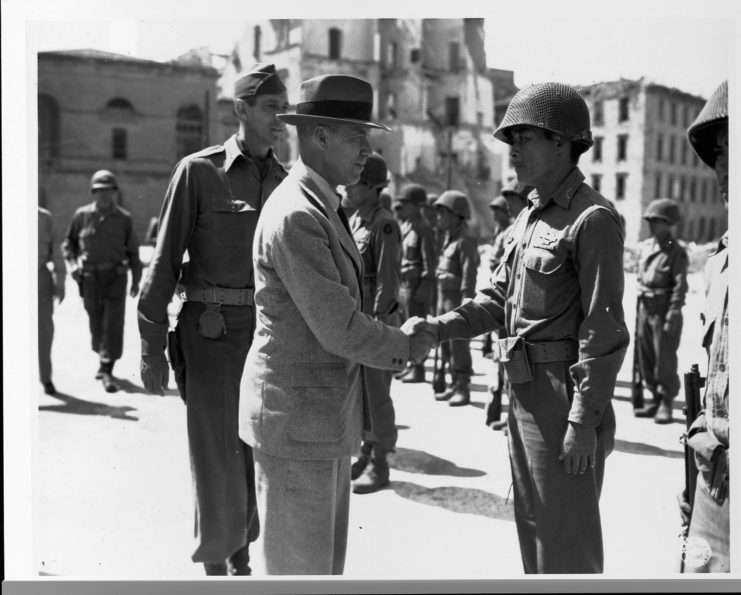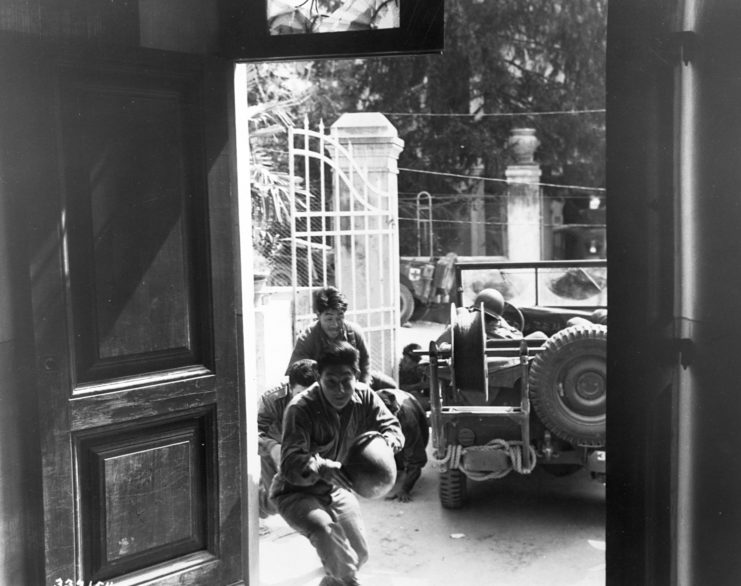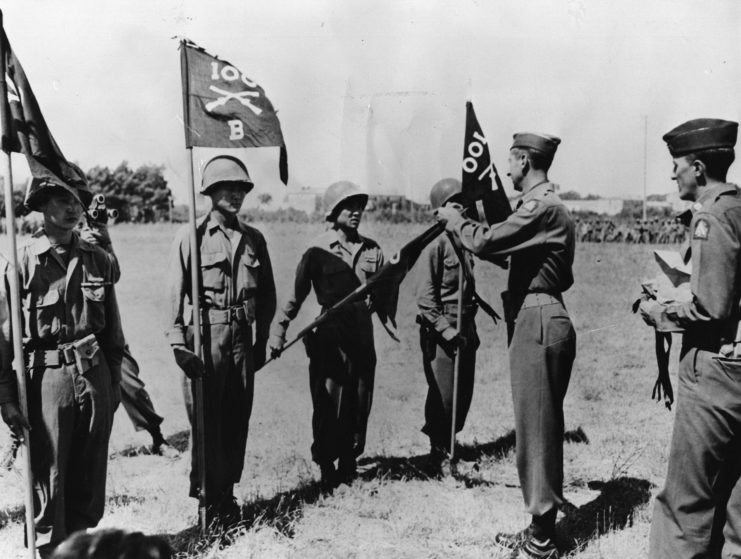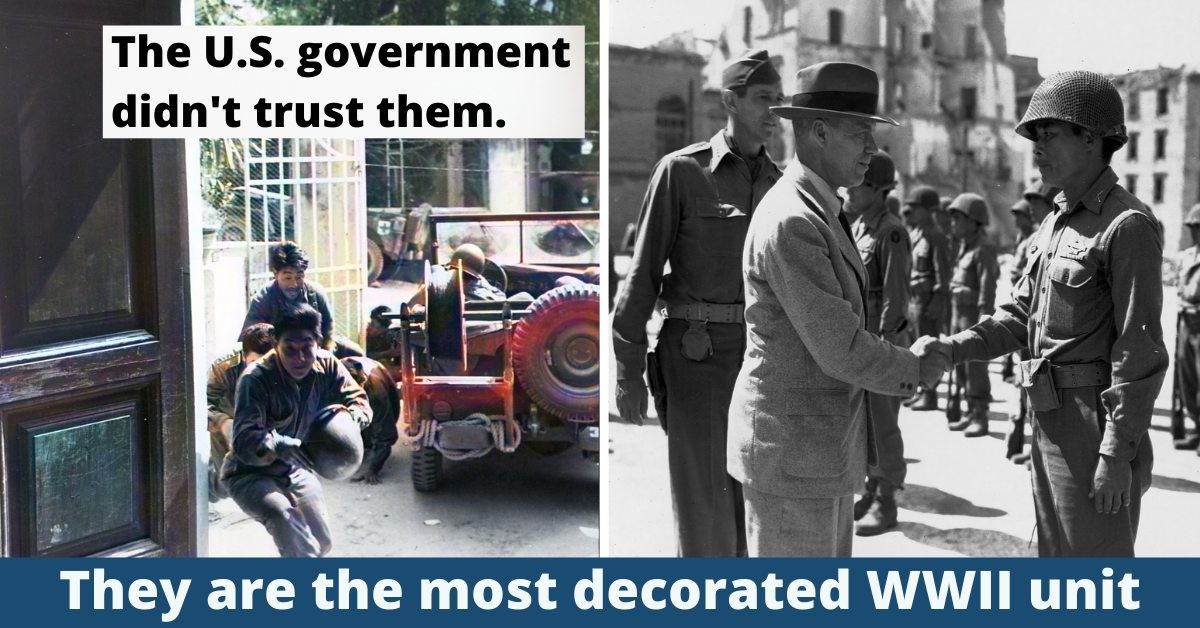The United States’ most decorated WWII unit was made up of people considered ‘enemy aliens’ at the time. When America joined WWII after the attack on Pearl Harbor in late 1941, they did what many other nations did when at war; gathering and incarcerating citizens from countries they were at war against.
These people were known as ‘enemy aliens,’ and were placed in internment camps after President Franklin Roosevelt signed Executive Order 9066, which affected over 100,000 Japanese Americans.
The United Kingdom and Germany made similar arrangements for people caught in their country as war was declared against their nations.
Japanese Americans were accepted into the military

After the war was declared against Japan, many US citizens feared that Japanese Americans’ loyalties may lie with Japan, not the US. Soon after the signing of EO9066, discrimination against Japanese Americans increased dramatically.
However, few realized that most Japanese Americans were just as angry about the attacks on Pearl Harbor. In Hawaii, people with Japanese ancestry made up such a large percentage of the population that it was deemed impractical to intern them. But because of the genuine risk of a Japanese invasion of Hawaii, many were still worried about their loyalties.
Because of this, 1,300 soldiers with Japanese ancestry were removed from the Hawaiian National Guard and made into the 100th Infantry Battalion. The battalion was sent to the US for training.
Going for broke
With the success of the 100th Infantry Battalion, the US decided to establish another Japanese American unit, the 442nd Infantry Regiment, which was activated in February 1943. To begin with, most of its members were Hawaiian.
The unit trained for combat from its inception until mid-1944. As US top brass was still unsure of the soldiers’ loyalties, the 442nd would not be sent to the Pacific Theatre of war.
During training, a number of men from the 442nd would be sent as replacements to the 100th Infantry Battalion, who had been shipped off to fight in late 1943. Their training was much harsher and more intense than usual US units, as officers wanted to test their loyalty.
The 442nd settled on the motto “Go For Broke,” and shipped out to Europe in April 1944, arriving in Italy in June 1944.
Upon their arrival, they began fighting the Germans alongside the 100th Infantry Regiment and quickly proved to be an extremely capable fighting force. In August 1944 the 100th was absorbed in the 442nd, with both serving as a single fighting force.
The unit joined the invasion of Southern France in September and made its way to the Vosges Mountains. It was here that the 442nd showed many tremendous feats of courage, grit and determination in the face of the enemy.
The Lost Battalion

In October 1944, the 141st Infantry Regiment launched an attack against German lines in the Vosges Mountains. The attack quickly bogged down and faced stiff resistance from the Germans, who were able to cut off 275 men from the 141st’s 1st Battalion deep behind enemy lines.
Without any easy means of rescue, the 141st was told to dig in.
To keep the men supplied, Allied aircraft attempted to air-drop supplies, but terrible weather caused many of the deliveries to fall into the hands of the enemy. Multiple attempts by different units were made over the course of a week to relieve the men, but all had failed.
As a result, the 442nd was called in to make another attempt. Initially, they made little progress due to the weather (around 20 feet of visibility) and poor ground conditions that favored the Germans.
The men fought extremely hard in an uphill battle against the Germans and suffered heavy losses. All seemed to be lost until the men of the 442nd launched a spontaneous Banzai charge at the Germans who fled at the sight of them. They had finally relieved the 141st.
Highly decorated

Around 14,000 men fought in the unit throughout their involvement in the war. The men who served earned 4,000 Bronze Stars, over 4,000 Purple Hearts, 560 Silver Star Medals, 21 Medals of Honor, and seven Presidential Unit Citations. This made them the most decorated unit of WWII.
In 2010, the 442nd was awarded the Congressional Gold Medal in recognition for the extremely brave actions of its members during WWII.
